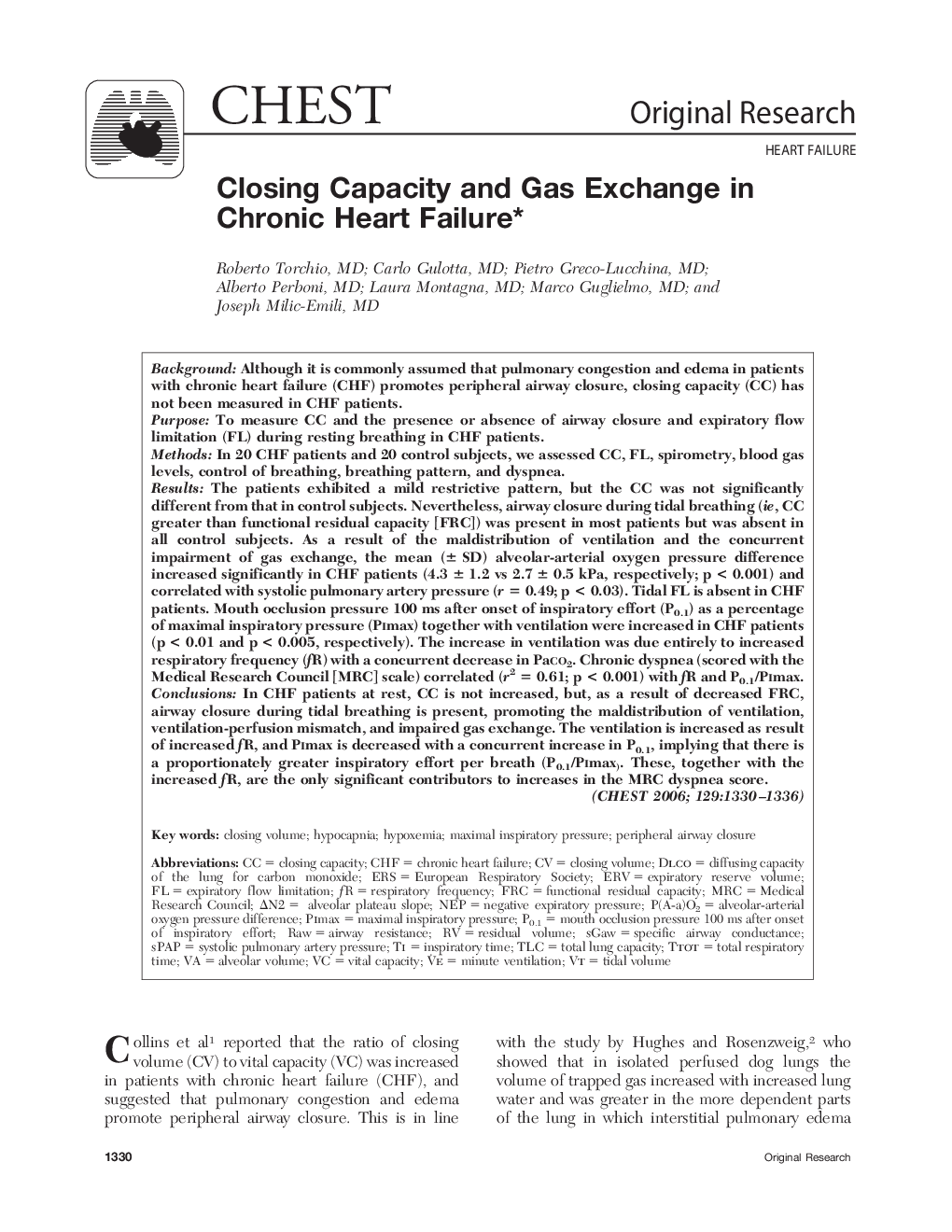| کد مقاله | کد نشریه | سال انتشار | مقاله انگلیسی | نسخه تمام متن |
|---|---|---|---|---|
| 2905899 | 1173438 | 2006 | 7 صفحه PDF | دانلود رایگان |

BackgroundAlthough it is commonly assumed that pulmonary congestion and edema in patients with chronic heart failure (CHF) promotes peripheral airway closure, closing capacity (CC) has not been measured in CHF patients.PurposeTo measure CC and the presence or absence of airway closure and expiratory flow limitation (FL) during resting breathing in CHF patients.MethodsIn 20 CHF patients and 20 control subjects, we assessed CC, FL, spirometry, blood gas levels, control of breathing, breathing pattern, and dyspnea.ResultsThe patients exhibited a mild restrictive pattern, but the CC was not significantly different from that in control subjects. Nevertheless, airway closure during tidal breathing (ie, CC greater than functional residual capacity [FRC]) was present in most patients but was absent in all control subjects. As a result of the maldistribution of ventilation and the concurrent impairment of gas exchange, the mean (± SD) alveolar-arterial oxygen pressure difference increased significantly in CHF patients (4.3 ± 1.2 vs 2.7 ± 0.5 kPa, respectively; p < 0.001) and correlated with systolic pulmonary artery pressure (r = 0.49; p < 0.03). Tidal FL is absent in CHF patients. Mouth occlusion pressure 100 ms after onset of inspiratory effort (P0.1) as a percentage of maximal inspiratory pressure (Pimax) together with ventilation were increased in CHF patients (p < 0.01 and p < 0.005, respectively). The increase in ventilation was due entirely to increased respiratory frequency (fR) with a concurrent decrease in Paco2. Chronic dyspnea (scored with the Medical Research Council [MRC] scale) correlated (r2 = 0.61; p < 0.001) with fR and P0.1/Pimax.ConclusionsIn CHF patients at rest, CC is not increased, but, as a result of decreased FRC, airway closure during tidal breathing is present, promoting the maldistribution of ventilation, ventilation-perfusion mismatch, and impaired gas exchange. The ventilation is increased as result of increased fR, and Pimax is decreased with a concurrent increase in P0.1, implying that there is a proportionately greater inspiratory effort per breath (P0.1/Pimax). These, together with the increased fR, are the only significant contributors to increases in the MRC dyspnea score.
Journal: Chest - Volume 129, Issue 5, May 2006, Pages 1330–1336